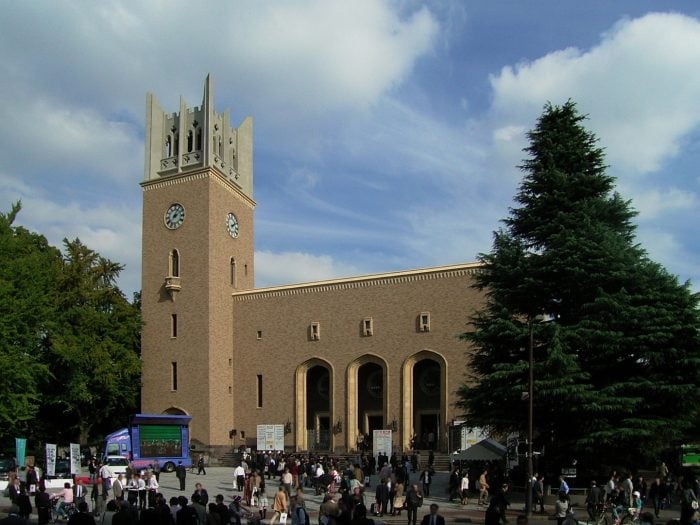
When I left Japan in 2010 after two years of being on the JET Programme, I never thought that five years later I’d be back working as an ALT. What’s more, a year after that, I was teaching at university!
Being on JET, working for a dispatch company and working at a university have all been distinct experiences, and making the transition from ALT to standalone teacher at a higher level required, among other things, a lot of applications.
To be clear, the ubiquitous ESID (every situation is different) chant of JET and ALT placement companies also stands here. But it’s far from impossible to move up the English teacher ladder, as I and many other English teachers in Japan have done.
Why work in a university?
I had had some experience working at university in Jamaica, and found that I had more autonomy as a teacher, and the pay was better than high school jobs. After a bit of research, I realised the same was true in Japan.
In Japan, it is also possible to teach more advanced or content specific courses at university than in a typical ALT position. For example, I have been able to teach journalism courses at the university level. And I’ve been given a free hand in designing content courses based on my background.
Added to that, it is rewarding to teach in intensive or particular skills-focused programmes, where the students are quite driven. This is in stark contrast to many public school students who just can’t wait to hear the chime. This not only lifts your spirits as a teacher, but it builds your skills set as well. Many universities tend to ask for people who are able to teach specific things such as EAP, ESP or test preparation.
Pay is one of the biggest reasons to switch to university teaching. All universities have their own pay scales, but it is not unusual to earn between ¥4.5-6 million per year in a standard contract position, where standard ALT contracts tend to pay around ¥3 – 3.6 million per year.
What you need
In short, you need at least a master’s degree to teach at a university in Japan.
Since universities are essentially research institutions, most ask for proof of academic publications. Some might relax this requirement for demonstrated knowledge in a particular field or for other reasons. In my case, while I had some short fiction and journalistic publications, and a master’s degree, I didn’t have any academic publications. Luckily, what I had seemed to be enough.
Of course, people with PhDs, who also typically have several publications, are sought after. If you take a look at job boards like job boards like JobsinJapan.com (and search for “university”), this one by the Japan Association for Language Teaching and this one on Japan Research Career Information Network, you can get a pretty good idea of what the requirements are.
Now, I am sure there might be people saying, “I know someone who has a bachelor’s and teaches at a university”. ESID. But a master’s is a standard requirement.
How to get into university teaching

I didn’t know much about the university world in Japan when I started applying, so I just applied. A lot. Some places have specific CV forms, some ask that you submit a Japanese version of your CV, some ask that you send a recorded demo lesson. The search was exhausting. Two places got back to me— one for a full-time position, and one for a part-time position. Fortunately, both of them hired me. And, finally, I could do other things with my time than scour job boards and write application letters.
Later on, I realized that recommendations are also quite a common way to get university jobs. One friend who was working as an ALT at the time was recommended for a position by a teacher in the master’s programme she was taking. I myself have been recommended for positions or been asked to recommend people.
At the same time, some people start out in part-time positions and then eventually move into full-time work, but not all part-time teachers want to go the full-time route. One well-known phenomenon is the university teacher who works part-time at many universities. This teacher works at several places in a week, sometimes even in one day. Financially, this can be a rewarding route. Let’s take a lower end rate of 30,000 yen per class per month, and the part-time teacher teaches three classes per day for a total of 15 classes per five-day week. That’s 450,000 yen per month. Many universities pay well for part-time teachers, and those teachers want to teach more classes for the money.
This brings us to the different ways you can work in a university. The first is of course the direct hire by the university. This JIJ blog article by Richard Miller breaks down the different titles and contract types at most universities.
Then there are the part-time teacher and the dispatch teacher. The latter is actually employed by a company who sends her to teach at a university. I have worked as both, and they are good ways to get some experience and build your resume. One big plus is that the requirements might not be as strict as they are for full-time, direct hire positions. One drawback, especially with dispatch companies, however, is that you might not get paid during holidays.
Keeping your university job
Once you’ve landed a university job, if you want to stay in that field, it becomes important to publish or perish, as they say. Many university positions are not tenured. That means that depending on the university, you’ll be looking for a new job in a few years. If you don’t have many publications, use the time in your first job to go to some conferences and get some more. That will help a lot when you search for another job.
Some people who enter with master’s degrees eventually pursue PhDs and are able to land tenured positions. This is the ultimate job security, as they don’t have to worry about searching for a new job every few years.
You can get it… if you really want to!
As you can see, getting a university teaching job in Japan requires some work, but it is not unattainable. Coming to Japan as an ALT is an easy in. If you have your sights set on a university job, use some of that glorious ALT free time to earn a master’s, then take it from there. While the vast majority of university jobs are English teaching jobs, and many teachers have degrees in TESOL or related fields, this is not always the case. More and more universities are asking for people with degrees in different fields. There might be no need to restrict yourself to a TESOL degree if your true interest is international relations, for example. After all, my master’s is in journalism.
This has just been my experience and some pointers based on what I’ve seen. Do you have some other recommendations for landing a university job? Did you or someone you know have a different experience? Let us know in the comments.
Photos by rawpixel.com from Pexels, and Wikimedia Creative Commons Written by KerryFurukawa.















